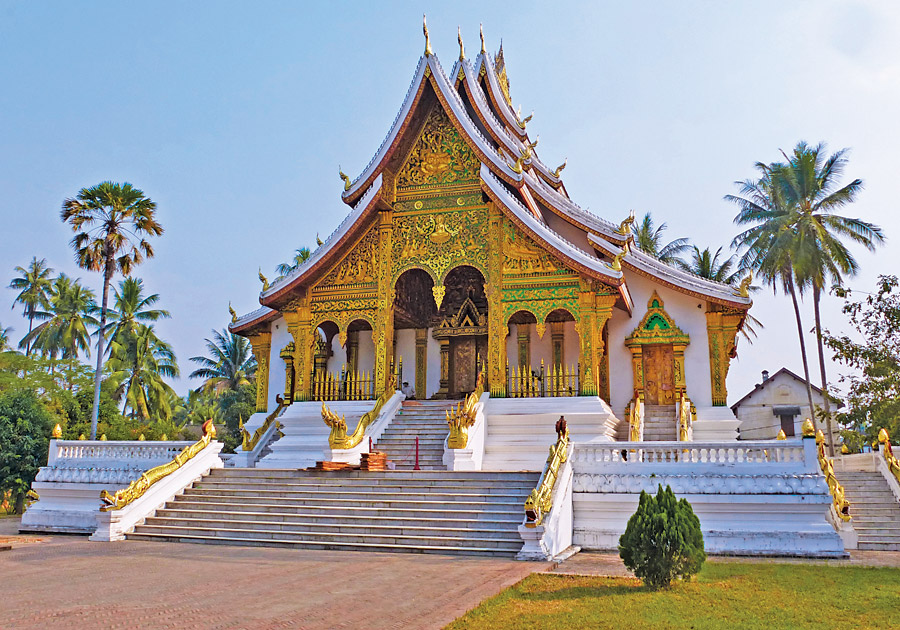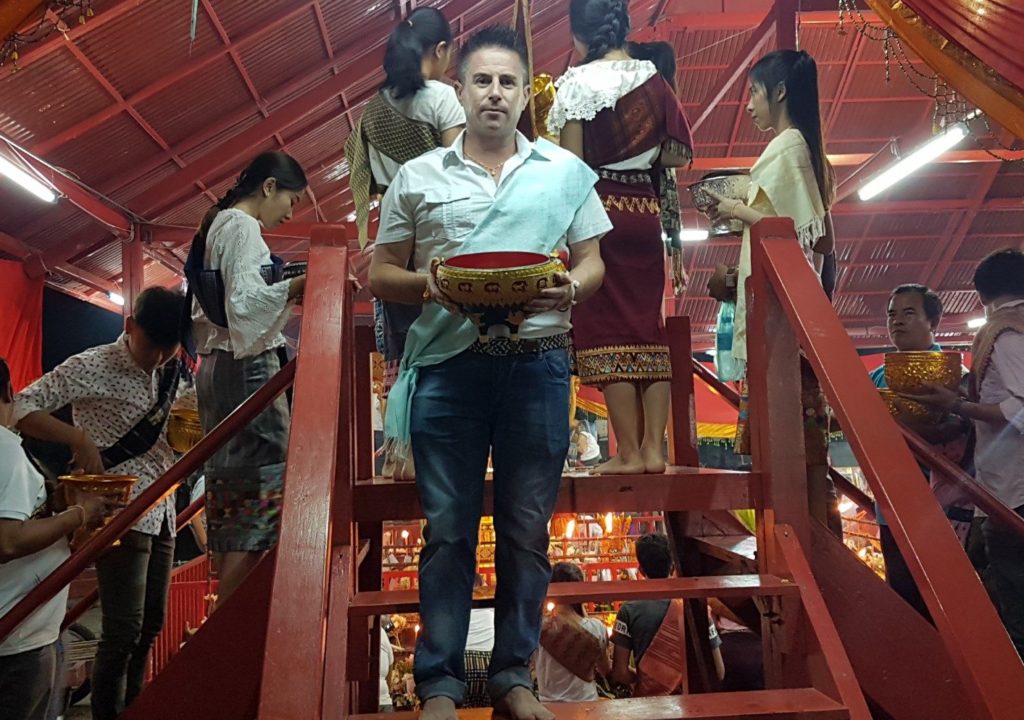
Temples and Pi Mai in Luang Prabang
The spiritual pulse of Luang Prabang beats through its 35 temples scattered across this small UNESCO World Heritage city. For temple enthusiasts, this former royal capital offers an unparalleled concentration of sacred architecture, seamlessly blending with its French colonial heritage.
Each morning at 4:00 AM, temple drums break the silence, signaling the awakening of the city. By 5:30 AM, the ancient ritual of almsgiving begins—a tradition where locals and visitors offer food to saffron-robed monks processing silently through the streets. This daily ceremony represents more than tourism; it reflects the deep Buddhist roots of Lao culture. For Laotian men, spending time as either a novice or full monk remains an essential rite of passage into manhood.
The temples standing today tell a story of resilience. In 1887, the Black Flag Army—mercenaries from China—devastated Luang Prabang, looting and destroying much of the old town. Only a few monasteries survived intact, including the magnificent Wat Xieng Thong at the peninsula’s tip and Wat Mai along the main thoroughfare. What visitors see now largely represents the remarkable rebuild following this historical tragedy.

Royal Temple built to enshrine the Phra Bang Buddha image



Distinctive architectural elements define these sacred spaces. The temples feature elaborate front façades complemented by graceful multi-tiered roofs. Each roof tip displays ornate finials (so faa) shaped like nagas—mythological serpents believed to protect Buddhism. Crowning every temple is the “Dok so faa,” a decorative element comprising miniature pagodas topped with multi-tiered parasols.
The artistic details within these temples showcase Laotian craftsmanship at its finest. Hand-painted or stenciled murals depict the Buddha’s life (jataka) or the Lao interpretation of the Ramayana epic (Phra Lak Phra Lam). Other common motifs include the Tree of Life (representing the Bodhi tree where Buddha achieved enlightenment) and the eight-spoked Wheel of Law (dhamachakra). Intricately carved wooden door panels often feature Hanuman, the beloved monkey god, while colorful glass mosaics and naga-shaped balustrades add further dimension to these architectural treasures.


Beyond their aesthetic appeal, these temples remain active centers of worship, education, and community life—living monuments where Laos’ spiritual traditions continue to flourish in the modern world.
China, Festival, Luang Prabang, Monks
Comments RSS Feed